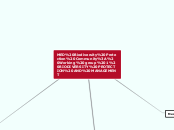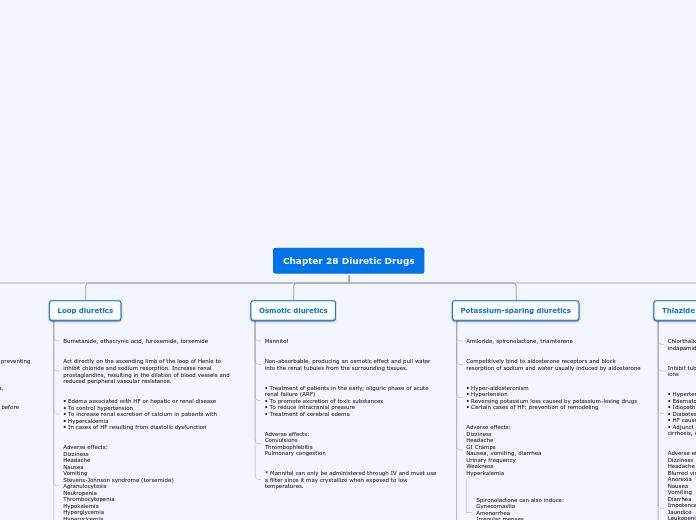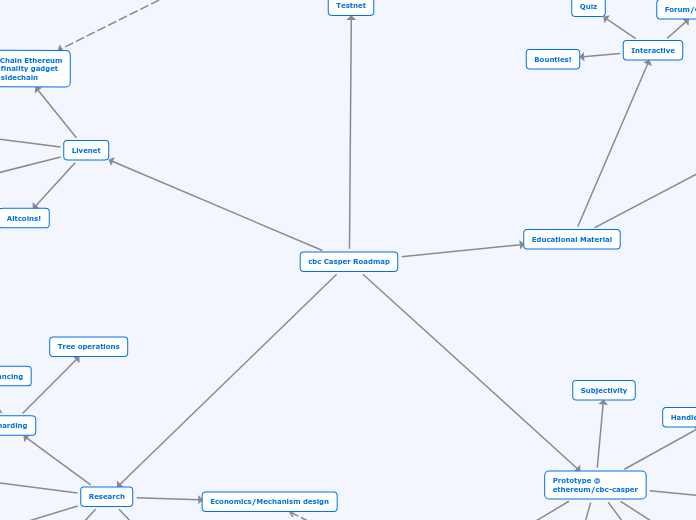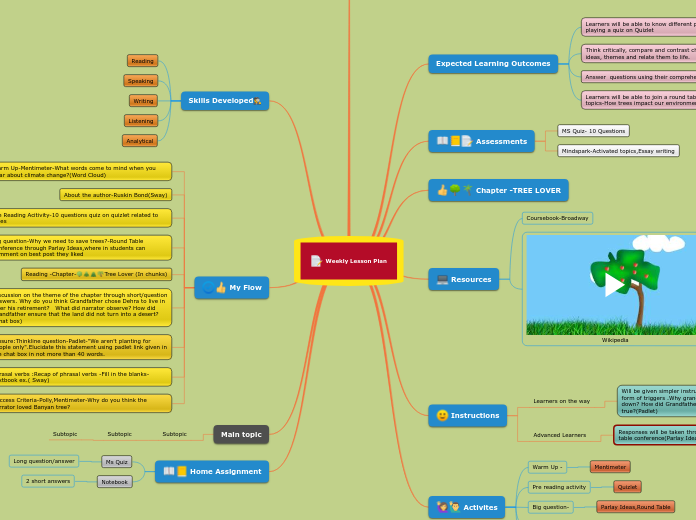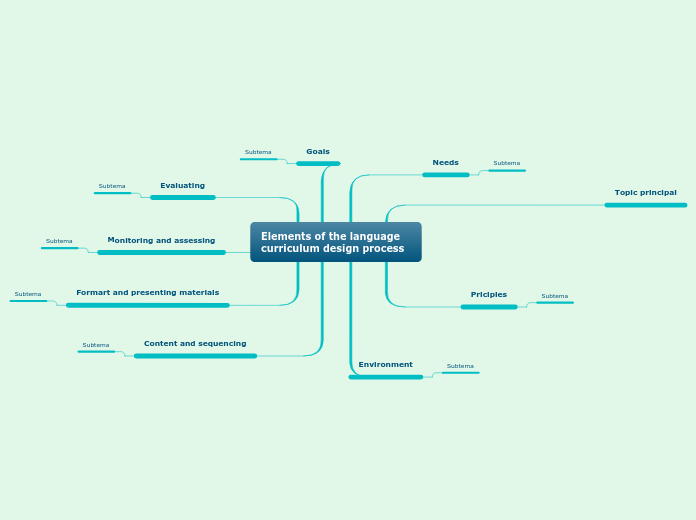See the ECAP marine litter group?
The renewed EcAp Roadmap is currently under review, at a final stage with steps 6 and 7 being addressed from September 2017 -> early 2018.
PANACeA could contribute potentially to these two steps addressed by the Mediterranean Correspondence Group on Monitoring (CORMON):
- Step 6: review existing monitoring programmes for ongoing assessment and regular updating of targets
- Step 7: develop and review relevant action plans and programmes
If we produce a white paper on ML Monitoring protocols we should address both MSFD and EcAp processes (check with François Galgani?)
Communicate the data generated by the MP to feed Steps 6 and 7 of ECAP roadmap review
Contribute to monitoring programmes
Contribute to filling the knowledge gaps under each EO that are hindering the implementation of national programmes and the sharing of best practices
PANACeA projects jointly feeding the database?
Contribution to SoER 2019 Report
Contribution to Mediterranean Sustainable Development Dashboard
MEDPAN Forum 2020. Visualisation and transfer of results that will be included in the PANACeA Spatial Platform to ensure capitalisation of final results. These results would be presented at the final PANACeA conference, which will be used as a platform for the preparation of the MEDPAN Forum 2020. Resulting monitoring frameworks and strategies that have been shown effective and transferable would be included in the upcoming SOER report that PANACeA will be contributing to
Visualisation and transfer of results that will be included in the PANACeA Spatial Platform to ensure capitalisation of final results. These results would be presented in the Final Conference of PANACeA that will be used as a platform for the preparation of the MEDPAN Forum 2020. Resulting monitoring frameworks and strategies that have shown to be effective and transferable would be included in the upcoming SOER report that PANACeA will be contributing to
ACT4LITTER Project ends summer 2018
Some exchange between Act4Litter and MedSeaLitter to check possibility of combining monitoring protocols?
An integrated Mediterranean-wide protocol could be included as a target of PANACeA as a contribution to work closely with these two projects (+ inputs from MEDBlueIslands), to be included in Guidelines to MPA managers (Target MedPAN) and if relevant, contribute to a white paper on Marine Litter (Target different WGs on ML under the MSFD and the UNEP-MAP). These results would be presented at the final PANACeA conference, which will be used as a platform for preparing the MEDPAN Forum 2020
MED Biodiversity Protection Community: Working group 1 BIODIVERSITY PROTECTION AND MANAGEMENT
European Level
EU Strategy for the Adriatic and Ionian Region (EUSAIR)
Mediterranean Coast and Macroregional Strategies Week, 20-23 Sept 2017, Slovenia
The EU Strategy for the Adriatic and Ionian Region (EUSAIR) is a macro-regional strategy adopted in 2014 that was jointly developed by the Commission, together with the Adriatic-Ionian Region countries and stakeholders, in order to address common challenges together. The Strategy aims at creating synergies and fostering coordination among all territories in the Adriatic-Ionian Region.
EUSAIR is built on four thematic pillars
Sustainable tourism
Environmental quality (including Topic 1 - on marine environment)
Connecting the region (transport and energy networks)
Blue growth (including Topic 2 - on Fisheries and aquaculture)
EU Policy on Blue Growth
10/05/2017-10/06/2017: Conf “Our ocean, an Ocean for life” (Malta)
UfM Regional Stakeholder Conference on Blue Economy Naples, Italy, 29-30 November 2017
6th Seminar on WestMed initiative (DG MARE) - "Workshop on the initiative for the sustainable development of the blue economy in the western Mediterranean", 9 Oct 2017
BlueMed initiative (H2020 CSA - DG Research) on Blue Growth and SRIA update and future pilot actions (next meeting in Athens, 1-2 February 2018)
Blue Growth is the long-term strategy to support sustainable growth in the marine and maritime sectors as a whole. Seas and oceans are drivers for the European economy and have great potential for innovation and growth. It is the maritime contribution to achieving the goals of the Europe 2020 strategy for smart, sustainable and inclusive growth.
Sea basin strategies to ensure tailor-made measures and to foster cooperation between countries
Provide knowledge, legal certainty and security in the blue economy: to improve access to information about the sea; maritime spatial planning to ensure an efficient and sustainable management of activities at sea
Develop sectors that have a high potential for sustainable jobs and growth, such as aquaculture (Fisheries website), coastal tourism, etc.
EU CC Adaption Strategy
MPA ADAPT
The population of indicators on biodiversity vulnerability to climate change and on climate change impacts on natural resources-
MPA Adapt will build the capacity of MPA managers to adapt to climate change
Evaluation in progress (October 2017 - January 2018: 12 week public internet consultation)
On 2017 January 2018, 12-week public internet consultation
On 26 October, open stakeholder workshop
On 5 April 2017, initial stakeholder workshop in Brussels
Strategy on Plastics in a Circular Economy
Action Plans designed for different levels of decision and MPA-related stakeholders (MPA-specific action plans to address the problem of Marine Litter
In March 2017 the EU Parliament adopted a legally binding reduction target for ML at the Union level of 30% by 2025 and 50% by 2050 (reference year 2014), which will be presented in the Strategy on Plastics in a Circular Economy (http://ec.europa.eu/smart-regulation/roadmaps/docs/plan_2016_39_plastic_strategy_en.pdf) . This Strategy will be presented by the EC at the end of 2017 and will address leakages of plastic and microplastics to the environment. This new initiative might have implications in all waste legislation (e.g. Waste Framework Directive 2008/98/EC, the Landfill Directive 1999/31/EC, the Packaging and Packaging Waste Directive 94/62/EC), and also in policies on the earlier phases of the product’s life-cycle.
Consider upstream sources action, in particular the EU circular economy strategy - strategy for plastics in 2018 (leakages of plastics and microplastics to the environment)
Habitat Directive
MPA climate change e-platform (enhancing functionalities of existing T-MedNet and IUCN Medmis) to transfer data to other MPAs.
Multiple stressor assessment model & spatial analysis (model of marine litter dynamics - accumulation areas): ML high resolution data and refined indicators (go a step beyond the Guidance on ML monitoring to promote the development of specific protocols on specific litter compartments) and share the mapping tool for upgraded management & monitoring plans.
10/10/2017-10/12/2017: Workshop on fisheries management measures in Natura 2000 sites in the Mediterranean Sea (Zadar, Croatia)
Article 17 requires Member States to report on the progress made in implementing the Habitats Directive every six years. Since the main focus of the directive is on maintaining and/or restoring a favourable conservation status for habitat types & species of community interest, monitoring & reporting under the directive is focusing on that.
New progress report due in 2019 for the 2013 - 2018 reporting period.
Maritime Spatial Planning Directive
POSBEMED: GIS database on Posidonia, dunes , tourism and Natura 2000 sites
FishMPABlue2 project is exploring the implementation of MSP options within MPAs using scenarios, etc. that might be transferable to this activity
MEDSEALITTER efforts to address a two-scale approach (macro vs micro and MPAs vs large areas) to harmonise the management of methodological approaches. Consider scaling up AMARE planning tool for MPA management & monitoring to adapt to MSPD requirements.
MPA climate change e-platform (enhancing functionalities of existing T-MedNet and IUCN Medmis) to transfer data to other MPAs
Build on ACT4LITTER to share the preventive measures identified and the assessment/decision-making tool beyond the project's lifetime, and share the scaled-up transnational governance scheme. Promote up-scaling of assessment and integration into management & implementation
Development of a monitoring/assessment algorithm (ICT tool)
AMARE project is exploring the implementation of MSP options within MPAs using scenarios, etc. that might be transferable
stakeholder workshops: planning exercise, in which the participants will build a possible MSP in the MPA, involving stakeholders from different maritime sectors.
management strategies linking conservation objectives and human activities
knowledge base monitoring tool (monitoring/spatial data to feed into GIS maps?)
EU tools to support MSDP implementation
Funding MSP cross-border projects: SIMWESTMED currently ongoing
Consider the parallel initiative at the Mediterranean level, Conceptual Framework for MSP under development in the framework of the Barcelona Convention
Needs expressed in SimWestMed: preliminary and shared assessment of case studies (fact sheets)? PANACeA could contribute to SimWestMed fact sheet case studies?
Technical support: The Assistance Mechanism for MSP was launched in 2016 to provide administrative and technical support to EU countries in implementing the MSP legislation. The project manages a website featuring information on existing MSP practices, processes and projects, a question and answer service, technical studies and a focal point service for EU countries.
Lack of cooperation and methodology for addressing transboundary issues
Lack of concrete tools and best practices for MSP process
Lack of common methodology for MSP
Part of the Integrated Maritime Policy
2021: Deadline for the establishment of maritime spatial plans
2016: Deadline for transposition and designation of component authorities
2014: Adoption of the directive
Marine Strategy Framework Directive
Under the MSFD, the institutional forum is the GES Working Group and its Technical Group on Marine Litter .
White Paper?
The idea of a global plastic convention is now being promoted within the UNEP framework.
Common protocol on ML monitoring in MPAs? Check for possibility of some exchange between Act4Litter and MedSeaLitter to test the potential to combine monitoring protocols ?
6th International Marine Debris Conference (6IMDC) 12-16 March 2018 San Diego
Multiple stressor assessment model & spatial analysis (model of marine litter dynamics - accumulation areas): ML high resolution data and refined indicators (go a step beyond the Guidance on ML monitoring to promote the development of specific protocols on specific litter compartments) and share the mapping tool for upgraded management & monitoring plans.
MedSeaLitter protocols (efficient - easy to apply and cost effective) to protect biodiversity from litter impact at basin and local MPAs scale to foster the harmonised monitoring of floating litter.
Testing standardised protocols for monitoring marine litter in MPAs and large marine areas.
Protocols to monitor marine litter impact on biodiversity in MPAs & large pilot areas on two scales: 1/floating (macro) and 2/ ingestion (micro)
Additional work is needed in order to ensure that Member States (MSs) collect the necessary data to assess progress towards good environmental status and targets. MSs are expected to report on these in 2018, especially for those descriptors where progress has not been sufficient, such as D10.
2016-2019 Work Programme of the MSFD Technical Group on Marine Litter
Riverine Litter
Top Litter items
Litter categories
International (beyond EU) collaboration
Thresholds
Programmes of Measures
Data management
Monitoring harmonisation (including data quality)
Litter baselines
Overview of research projects and progress
Descriptor 10. Marine litter does not cause harm
EU Technical Group plans to review its guidelines for monitoring marine litter.
Lack of data to assess progress towards GES and targets - Specially since the latest 2017 decision on GES
Descriptor 1. Biodiversity is maintained
AMARE efforts to define key (most effective and representative) descriptors out of the 11 MSFD GES descriptors to be used for MPA managers to monitor the state of their MPAs more efficiently, and therefore reduce their workload.
The Integrated Maritime Policy seeks to provide a more coherent approach to maritime issues, with increased coordination between different policy areas.
It focuses on:
Issues that require the coordination of different sectors and actors, e.g. marine data & knowledge, maritime spatial planning...
Issues that do not fall under a single sector-based policy, e.g. "blue growth" (economic growth based on different maritime sectors).
Aims to achieve Good Environmental Status (GES) of the EU's marine waters by 2020. This is done through a six-year process.
2018 marks the beginning of a new review cycle process starting with assessment, identification of targets and indicators, followed by the development of monitoring programmes and programmes of measures.
The latest decision on GES (2017) from the Commission is going further in the need to establish precise objectives for GES (new criteria & standard methodologies, thresholds, etc.). However, there is a large knowledge gap to overcome
In 2018, MSs are expected to report on the collection of the necessary data to assess progress towards good environmental status and targets, especially for those descriptors where progress has not been sufficient.
EU Biodiversity Strategy for 2020
Target 6: Help stop the loss of global biodiversity
Target 2: Maintain and restore ecosystems
GIS database on Posidonia, dunes , tourism and Natura 2000 sites
Target 1: Protect species and habitats
WETNET Guidance Manual for Wetland multi-level governance
Multiple stressor assessment model & spatial analysis (model of marine litter dynamics - accumulation areas): ML high-resolution data and refined indicators (go a step beyond the Guidance on ML monitoring to promote the development of specific protocols on specific litter compartments) and share the mapping tool for upgraded management & monitoring plans.
Reflects the commitments made by the EU within the Convention of Biological Diversity
Ambitious strategy setting out 6 targets and 20 actions to halt the loss of biodiversity and ecosystem services in the EU by 2020 (source: European Commission)
Biodiversity Information System for Europe (BISE)
PANACeA Biodiversity Platform?
Global
Sustainable Development Goals - Agenda 2030
14.c. Enhance the conservation and sustainable use of oceans and their resources by implementing international law as reflected in UNCLOS, which provides the legal framework for the conservation and sustainable use of oceans and their resources, as recalled in paragraph 158 of The Future We Want
14.a. Increase scientific knowledge, develop research capacity and transfer marine technology, taking into account the Intergovernmental Oceanographic Commission Criteria and Guidelines on the Transfer of Marine Technology, in order to improve ocean health and to enhance the contribution of marine biodiversity to the development of developing countries, in particular small island developing States and least developed countries
14.5. By 2020, conserve at least 10 per cent of coastal and marine areas, consistent with national and international law and based on the best available scientific information
Use maps to identify hotspots for biodiversity protection, i.e. marine litter/PAs/new hotspots
Testing in five pilot sites
Multiple stressor assessment model & spatial analysis (model of marine litter dynamics - accumulation areas): ML high-resolution data and refined indicators (go a step beyond the Guidance on ML monitoring to promote the development of specific protocols on specific litter compartments) and share the mapping tool for upgraded management & monitoring plans
14.2. By 2020, sustainably manage and protect marine and coastal ecosystems to avoid significant adverse impacts, including by strengthening their resilience, and take action for their restoration in order to achieve healthy and productive oceans
ECOSUSTAIN
Water monitoring implementation manual
European operational concept on transnational water monitoring
Development and implementation of short-term and long-term monitoring solutions
Focus on visualisation tools for the data base (spatial geoportal?)
MPAs climate change e-platform (enhancing functionalities of existing T-MedNet and IUCN Medmis) to transfer data to other MPAs
14.1 By 2025, prevent and significantly reduce marine pollution of all kinds, in particular from land-based activities, including marine debris and nutrient pollution
MSFD Descriptor 10
Share the preventive measures identified, the assessment/decision-making tool and promote up-scaling of assessment and integration into management & implementation
Development of an algorithm (assessment/decision-making tool )
Development of Specific Action Plans designed for different decision levels and MPA-related stakeholders
Goal 14: Life Below Water
Goal 13: Climate change
MPA-Adapt
Focus on visualisation tools for the database (spatial geoportal?)
MPAs climate change e-platform (enhanching functionalities of existing T-MedNat and IUCN Medmis) to transfer data to other MPAs
Regional framework plan for long-term climate change impact monitoring in MPAs
Goal 12: Responsible Consumption and Production
Water Framework Directive, Ramsar Convention
MEDBlueIslands could ally to contribute to marine litter info on land sources
ACT4LITTER Management Plans might include measures related to Responsible Consumption and Production and the EU Plastics Strategy
Contribution to the MTR with the results of ACT4Litter mainly by highlighting the measures identified. Decide on the best tool to use to develop that (informative video? Infographics?...)
Biodiversity Convention
Target 14
By 2020, ecosystems that provide essential services, including services related to water, and that contribute to health, livelihoods and well-being, are restored and safeguarded, taking into account the needs of women, indigenous and local communities, and the poor and vulnerable.
Target 11: By 2020, at least 17 per cent of terrestrial and inland water areas and 10 per cent of coastal and marine areas, especially areas of particular importance for biodiversity and ecosystem services, are conserved through effectively and equitably managed, ecologically representative and well-connected systems of protected areas and other effective area-based conservation measures, and integrated into the wider landscape and seascape.
Help participating Mediterranean countries reach their targets (Greece)
Aichi Biodiversity Targets
Preparations for the Post-2020 Biodiversity Framework. The 15th meeting of the COP in 2020 is expected to update the Convention’s strategic plan. This would be done in the context of the 2050 Vision of the current Strategic Plan for Biodiversity 2011-2020, as well the 2030 Agenda for Sustainable Development and other relevant international processes, and in the light of an assessment of the progress made in achieving the goals and Aichi Biodiversity Targets of the current plan as well as of future change scenarios.
Strategic Plan for Biodiversity, including the Aichi Biodiversity Targets, for the 2011-2020 period
CBD E-learning platform on Protected Areas
Modules were developed by the Secretariat of the Convention on Biological Diversity in collaboration with the United Nations Development Programme (UNDP), the International Union for Conservation of Nature - World Commission on Protected Areas (IUCN-WCPA), and The Nature Conservancy (TNC)
Mediterranean Level
UNEP-MAP Integrated Monitoring & Assessment Programme and related Assessment Criteria (IMAP)
Seven steps of the EcAp RoadMap
Step 7: Develop and review relevant action plans and programmes
POTENTIAL PRDUCT
Step 6: Review existing monitoring programmes for ongoing assessment and regular updating of targets
Currently Underway
Develop and review relevant action plans and programmes
Review existing monitoring programmes for ongoing assessment and regular updating of targets
Step 5: Derive operational objectives with indicators and target levels
Step 4: Develop a set of ecological objectives corresponding to the Vision and strategic goals
Eleven ecological objectives and 28 corresponding operational objectives and 61 indicators ensuring full synergy with the EU MSFD work
10. Marine and coastal litter does not adversely affect coastal and marine ecosystems
MedSeaLitter protocols (efficient - easy to apply and cost effective) to protect biodiversity from litter impact at basin and local MPAs scale to foster harmonised monitoring of floating litter
9. Contaminants cause no significant impact on coastal and marine ecosystems and human health
8. The natural dynamics of coastal areas are maintained and coastal ecosystems and landscapes are preserved
POSBEMED
GIS database on Posidonia, dunes, tourism and Natura 2000 sites
Guidelines for sustainable beach and stranded seagrass management
Best practices for enhancing the conservation effectiveness of MPAs hosting seagrass ecosystems, beach & dune habitats
Strategy for joint management of Posidonia for Mediterranean beaches & dunes
WETNET
Transfer international good practices on wetland management
Framework of best practices in improved wetlands management
Guidance Manual for Wetland multi-level governance
1. Biodiversity is maintained or enhanced
Step 3: Identify important ecosystem properties and assess ecological status and pressures
Step 2: Set common Mediterranean strategic goals
Step 1: Define an Ecological Vision for the Mediterranean
UNEP MAP EcAp Process
2nd cycle of the EcAp RoadMap : 2016 - 2021
2016-2019 marks the initial phase (in line with Decision IG. 21/3 ), during which the existing national monitoring and assessment programmes will be reviewed and revised based on the agreed common indicators (=so that national implementation of IMAP can be fulfilled in a sufficient manner)
Main outputs during the initial phase of IMAP
Development of national level integrated monitoring and assessment programmes
Refinement of assessment criteria
Update of GES definitions
11 ecological objectives and corresponding 28 operational objectives and 61 indicators ensuring full synergy with the EU MSFD
Ecosystem Approach is the guiding principle to MAP
Programme of Work and all policy implementation and development undertaken under
the auspices of UNEP/MAP Barcelona Convention, with the ultimate objective of
achieving the Good Environmental Status (GES) of the Mediterranean Sea and Coast.
Regional Plan for managing ML in the Mediterranean
Seek harmonisation of methodologies relating to management, seeking comparability between the three MPs
ACT4LITTER
Build on ACT4LITTER to share the preventive measures identified and the assessment/decision-making tool beyond the project's lifetime, and share the scaled-up transnational governance scheme. Promote up-scaling of assessment and integration into management & implementation - in line with MSFD TSML
Development of an algorithm (ICT tool)
Transnational Joint Governance plan to improve coordination to address the problem of Marine Litter in Mediterranean MPAs
Action Plans designed for different levels of decision and MPA-related stakeholders (MPA-specific action plans to address the problem of Marine Litter)
AMARE
Five pilot sites
Oceanographic data & indicators for MPAs & GIS maps
Roadmap for scenario analysis of management alternatives
Multiple stressor assessment model & spatial analysis (model of marine litter dynamics - accumulation areas): ML high resolution data and refined indicators (go a step beyond the Guidance on ML monitoring to promote the development of specific protocols on specific litter compartments) and share the mapping tool for upgraded management & monitoring plans
Geospatial management tools (spatial geoportal)
Guidelines for drafting a standard management plan
Transfer best practices across MPAs & at transnational scale
MedSeaLitter protocols (efficient - easy to apply and cost effective) to protect biodiversity from litter impact at basin and local MPAs scale to foster harmonised monitoring of floating litter.
Workshops on transferring protocols to Med MPAs
International conference on marine litter
General guidelines for marine litter monitoring in MPAs & large pilot areas
Testing standardised protocols for monitoring marine litter in MPAs and large marine areas
Protocols to monitor marine litter impact on biodiversity in MPAs & large pilot areas on two scales
Ingestion (micro)
Floating (macro)
MEDPOL and MEDPOL database
Needs: efforts towards coordination/alignment of monitoring plans with MEDPOL
Reorganisation and implementation of the RAC MEDPOL database, which includes Meta Data Templates for Pollution and Marine Litter.
Objectives by 2020
need to strive for monitoring & science-based prevention & reduction/management measures
need to develop, implement and coordinate ML management & reduction measures
UNEP-MAP Biodiversity protocol
Lack of data regarding coastal wetlands: perspective of revising the protocol for clearer protection of coastal wetlands
Ecosystem-based approach
Allows for MPA designation beyond national jurisdiction
10% of MPA network by 2020
UNEP MAP Barcelona - Mediterranean Strategy on Sustainable Development (MSSD)
POTENTIAL PRODUCT
CONFISH
Compare and integrate genomics, fishery biology data and experience-based knowledge to assess fishery resources status and support their management
Toolkit (Strategic Options and strategic paths) for the sustainable management of marine ecosystems. Build bottom-up participatory approach for evolutionary-based fisheries management (three workshops)
FishMPABlue2
Small-scale fisheries governance toolkit for comanagement with representatives of MPAs with representatives of Small-Scale Fisheries
The MSSD 2016-2025 was adopted by the Barcelona Convention contracting parties in 2016. It provides an integrative policy framework and a strategic guiding document for all stakeholders and partners to translate the 2030 Agenda for Sustainable Development at the regional, sub regional and national levels. It aims to harmonise the interactions between socio-economic and environmental goals, adapt international commitments to regional conditions, guide national strategies for sustainable development, and stimulate regional cooperation between stakeholders in the implementation of sustainable development.
Mediterranean sustainable development Dashboard (Ref indicators for biodiversity status assessment)
